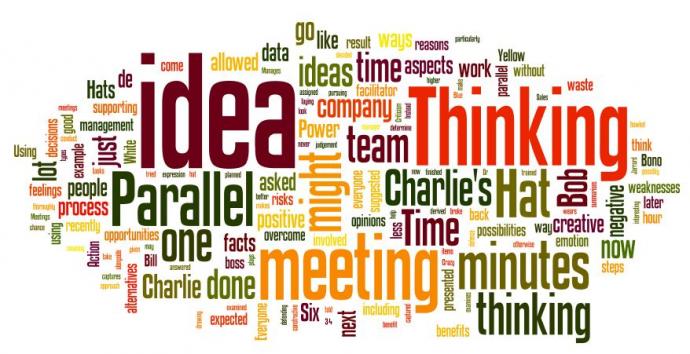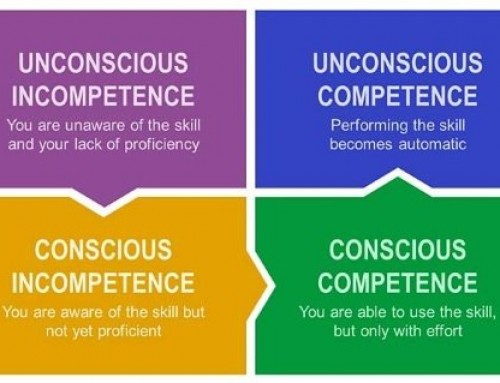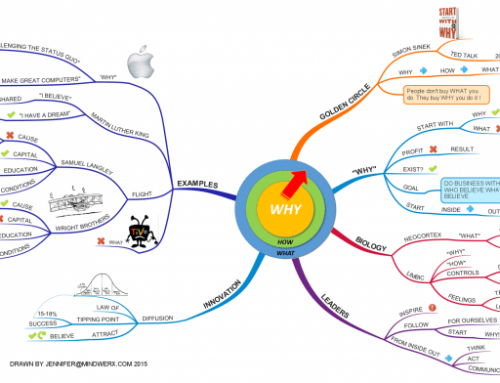“I was in an important meeting recently and in an hour I saw one person destroyed and the company lose a million dollar opportunity.
“It was a management meeting and we had been asked for ideas to tighten our belts while Sales got the company back on track. Within minutes the meeting broke down.

Charlie presented an interesting idea that had real merit, but before he had finished, Bob was all over him. Bob said the idea wouldn’t go down well with the union, that a similar idea had been tried before and that it just wouldn’t work. I’ve been with the company longer than Bob and I’d never heard the idea before so I jumped to Charlie’s defence. In minutes the meeting was split into two camps – one defending Charlie, the other supporting Bob. When someone suggested a compromise she was howled down and the boss had to bring the meeting to order. Heading to another meeting, the boss told us to go back to the drawing board.
As people filed out they complained that the meeting was a complete waste of time. I caught up with Charlie – he was pretty upset. ‘I’ve done the figures Marg, this idea will save us millions. This is the last time I’m going to waste my time coming up with ideas.'”
Sound familiar?
Stories like this come from people in all types of organisations, but there are simple and effective ways to overcome problems just like this one.
One way to have constructive and creative meetings, that take a lot less time, is to introduce the Power of Parallel Thinking into the process.
Parallel Thinking
 The term Parallel Thinking was first used by Dr Edward de Bono, one of the foremost exponents of Deliberate Creative Thinking. In his book ‘Parallel Thinking’ de Bono explains:-
The term Parallel Thinking was first used by Dr Edward de Bono, one of the foremost exponents of Deliberate Creative Thinking. In his book ‘Parallel Thinking’ de Bono explains:-
“Parallel Thinking simply means laying down ideas alongside each other. There is no clash, no dispute, no initial true/false judgement. There is instead a genuine exploration of the subject from which conclusions and decisions may then be derived through a ‘design’ process.”
Parallel thinking changes the way people think and act, particularly when working as a team. Instead of an idea being subjected to different views all at once, the thinking is laid down in parallel. This can be seen in an example, using de Bono’s Six Thinking HatsÒ – one of the best parallel thinking tools available.
Parallel Thinking in Action – Using Six Thinking Hats
Let’s imagine that Charlie’s idea has been presented to the management meeting, but this time the manager wants to explore it using Six Thinking HatsÒ. Guided by a trained facilitator, who captures the thinking on a flip chart, the meeting might go like this:-
White Hat – Looks at facts and data, known or needed.
With the White Hat the team examines the facts and data of Charlie’s idea. Questions of fact are asked and answered, or recorded for investigation. Anyone trying to express opinions, either negative or positive, is gently reminded that only facts and data are allowed and that opinions come later.
Time: 5-10 minutes
Yellow Hat – Explores positive aspects, benefits and opportunities
Everyone, including Bob, wears the Yellow Hat and is expected to think of positive aspects of the idea. What is good about it, what possibilities and opportunities does it present, and what are the benefits? The team stretches to find value in the idea, for the company, staff, suppliers, customers and others that might benefit.
Time: 5 minutes
Black Hat – Considers the risks, negative aspects or weaknesses and why it won’t work
Everyone, including Charlie, now plays devil’s advocate on the idea. Why won’t it work, what are the risks involved, what might go wrong, what negative impact might there be? Thinking is done without emotion and supporting reasons must be given.
Time: 3-4 minutes
Green Hat – Searches for alternatives, new ideas and creative possibilities
The team now looks for creative ways to make Charlie’s idea even stronger. Ideas to overcome weaknesses, variations on implementing the idea, or alternative ways to achieve the same result can all be suggested. Crazy ideas are encouraged and can be examined later.
Time: 7-10 minutes Remember every idea is captured.
Red Hat – Allows expression of feelings, emotions and intuition
Having done a lot of thinking about Charlie’s idea, everyone now expresses how they feel about it. Is the idea worth pursuing, should it be adopted, or should alternatives be considered? Criticism is not allowed, nor are reasons for feelings required, while emotion is not just allowed, it is expected.
Time: 2 minutes
Blue Hat – Manages the thinking, summaries, makes decisions, and sets out action steps
The team can now determine the next steps. The facilitator summarises the thinking done under each hat, then calls for suggestions on what to do next or might conduct a vote on whether or not to adopt the idea. Action items might be assigned and the next meeting planned.
Time: 10 minutes.
Using the above simplified approach to look at Charlie’s idea, the team would have thoroughly explored it and possibly decided how to proceed. They would do so without the usual antagonism, and everyone would have been involved throughout the process, meaning the chance of the idea, if it’s a good one, gaining full support and being effectively implemented is a lot higher than might otherwise happen.
And it would have all been done in less than an hour, which is a lot better result than what happened at the original meeting.
This is just one example of the Power of Parallel Thinking!







Leave A Comment
You must be logged in to post a comment.